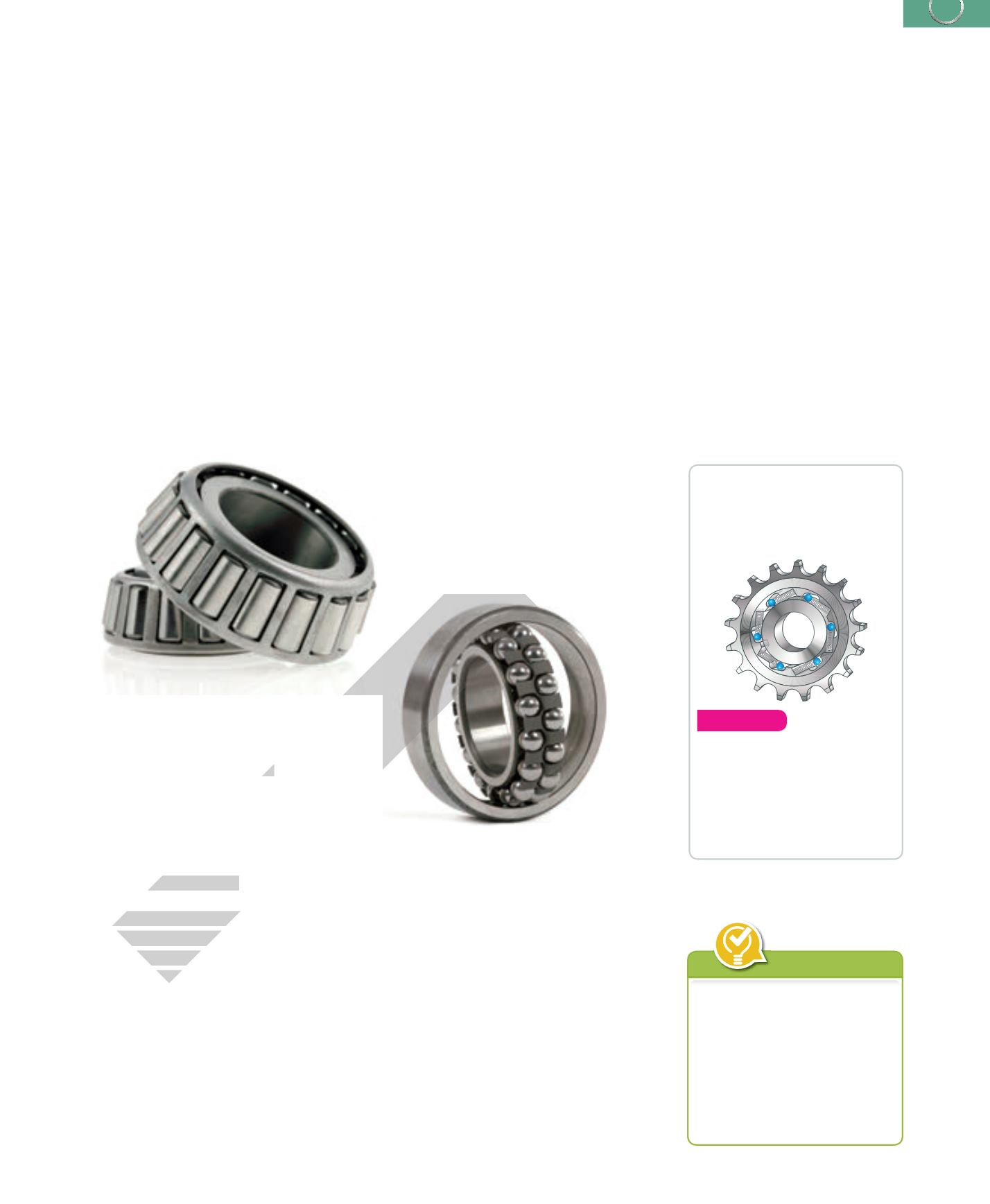
119
5. Mechanisms
www
8.
BEARINGS
The support that holds a rotating shaft is called a bearing. It keeps the shaft in
position.
❚❚
Plain bearings
are formed by two rings. One of the rings is connected to the
rotating shaft and the other is connected to the support. Plain bearings are made
of smooth materials, but they need lubrication to reduce friction. Plain bearings
are quiet, but they produce a lot of heat at high speeds.
❚❚
Anti-friction bearings
are used in many machines. They reduce the amount of
surface contact between the shaft and other parts.
Antifriction bearings have four parts:
❚❚
The inner ring
is in contact with the rotating shaft.
❚❚
The outer ring
is connected to the rest of the mechanism.
❚❚
The rolling elements
are cylindrical rollers or round balls (ball bearings).
❚❚
The retainer
keeps the rolling elements in position.
9.
FREEWHEEL
The pedals on the first bicycles were connected directly to the axle of the wheel.
As a result, if people pedalled backwards, the bicycle moved backwards too. The
pedals also turned very quickly when people rode their bicycles down hills, so they
either had to let their feet off the pedals or they had to pedal very quickly.
The invention of the freewheel solved these problems. A freewheel transmits
motion in one direction, and turns freely in the opposite direction. As a result, the
chain of a modern bicycle can move the wheels when you pedal forward, but not
when you pedal backward. The chain cannot transmit motion from the wheels to
the pedals.
Applications
:
There is a freewheel chain mechanism of your bicycle. Cars have
also got freewheels in their starting systems.
Freewheel
A freewheel combines the
characteristics of sprockets,
ratchets and bearings.
Analyse
41.
Look at the freewheel.
In which direction will
the exterior and interior
rings turn together? In
which direction will only
the exterior ring turn?
Roller bearings and ball bearings
❚
A bearing supports a
rotating shaft. There are
plain bearings and anti-
friction bearings.
❚
A freewheel transmits
motion in one direction and
turns freely in the opposite
direction.
Key concept
ADVANCE EDITION


